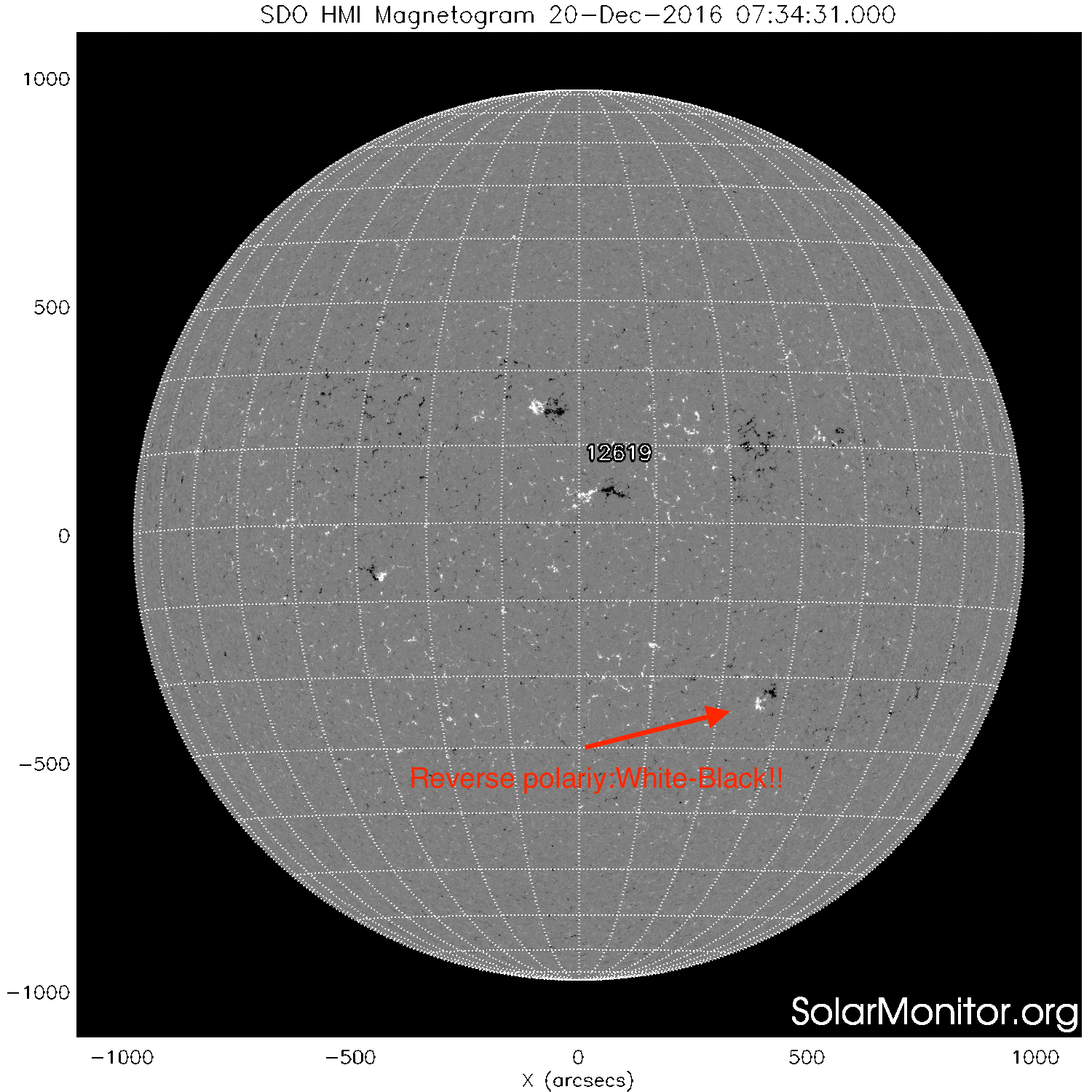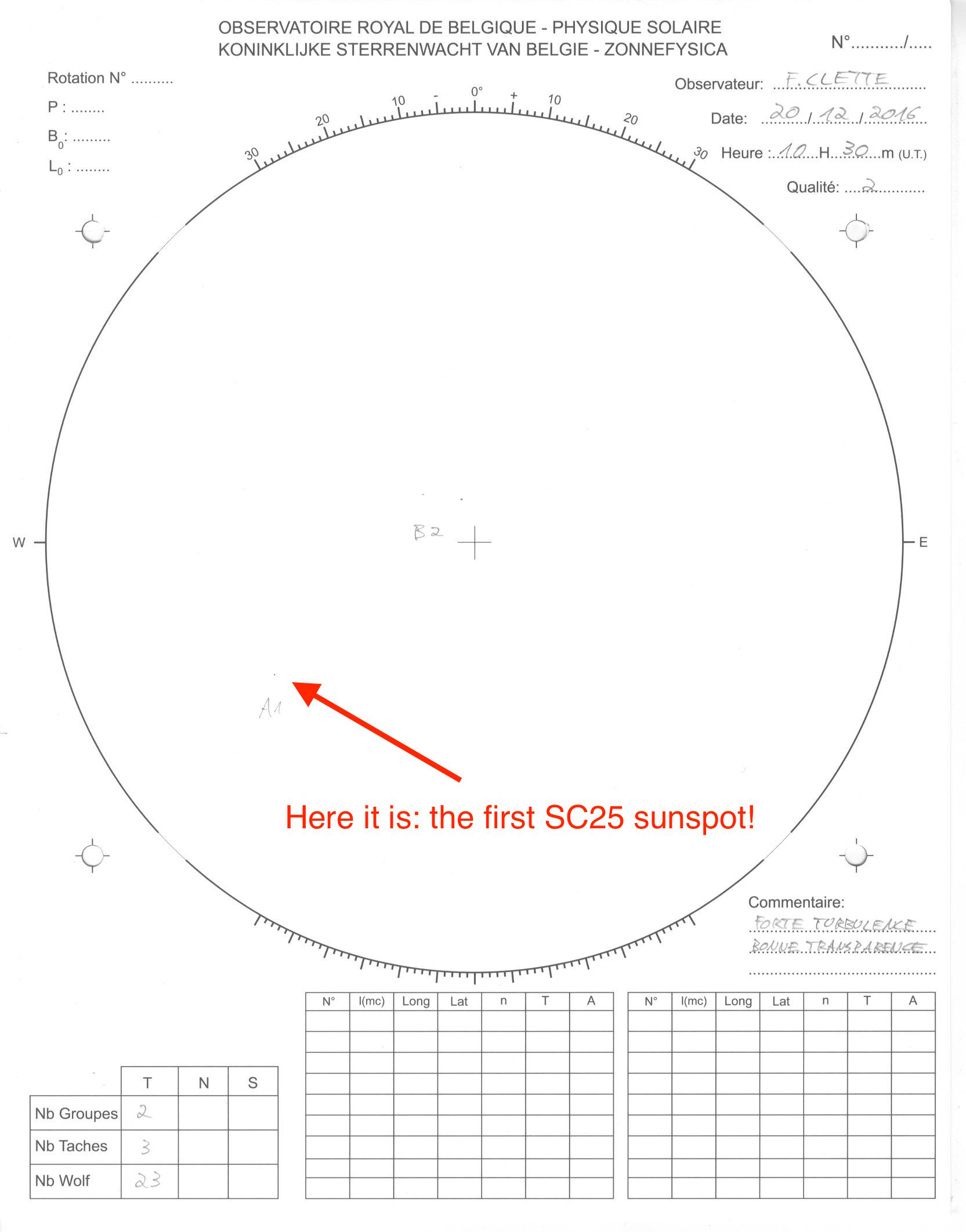An attentive sunspot observer from USET spotted on December 19 a particular interesting structure in a magnetogram. It differed from the other present structures because of its position on the solar disk and the leading black - instead of white - area. By its high latitude (23°) and reverse polarity, the small magnetic dipole definitely belonged to the next sunspot cycle. If it would get strong enough to produce sunspots, it would make it the very first sunspot group of cycle 25.

And it did! On December 20, 10:30 UT, 2016, an USET observer made a drawing of sunspot A1.

It doesn’t mean that cycle 24 ended. Usually sunspot cycles overlap, up to 4 year. And this is what happens: cycle 24 is heading down and simultaneously, cycle 25 pops up in a very cautious way.
In fact, to be fully realistic, the preparation for a next sunspot cycle starts as soon as the first new magnetic fields are generated near the poles. This happens already before the sunspot peak of the ongoing cycle! However, in terms of solar activity, it is only when the cycle generates magnetic fields that are strong enough to produce sunspots that the new sunspot cycle begins.
Typically, the first spots of a cycle emerge at much higher latitudes than the spots of the co-existing previous cycle, which is in its final declining phase, with spot latitudes around 10°.
More to be expected!





